
5 things to know about Winnipeg’s big sewage problem
115 billion litres, 70 years to fix, $5.5 billion in lawsuits
When 60 snowmobilers from seven nations set off across northwestern Quebec on the second annual First Nations Expedition in late January, it was to spread a message of reconciliation and to honour murdered and missing Indigenous women and girls. The riders were travelling “the same routes that our ancestors did,” organizer Eric Labbé said, adding that snowmobiles are a powerful symbol of northerners’ freedom to travel. In the mid 20th century, the RCMP and Quebec police infamously killed Inuit sledding dogs, and Indigenous communities across Canada have stories about transportation dogs disappearing due to colonization.
“Now, the snowmobile is one of the fastest ways to travel around the land to visit our brothers and sisters from other communities,” Labbé told The Narwhal about the 14-day, 3,250-kilometre ride from Pessamit to Wendake, Que. But while the warm welcome from both Indigenous and settler communities was nice, the same can’t be said about the unseasonably warm weather. At times, it was above freezing, which Labbé said was a concern for participants’ safety and mobility.
A mild winter with a lack of snow has been a problem for snowmobilers from First Nations in northern Ontario, too.
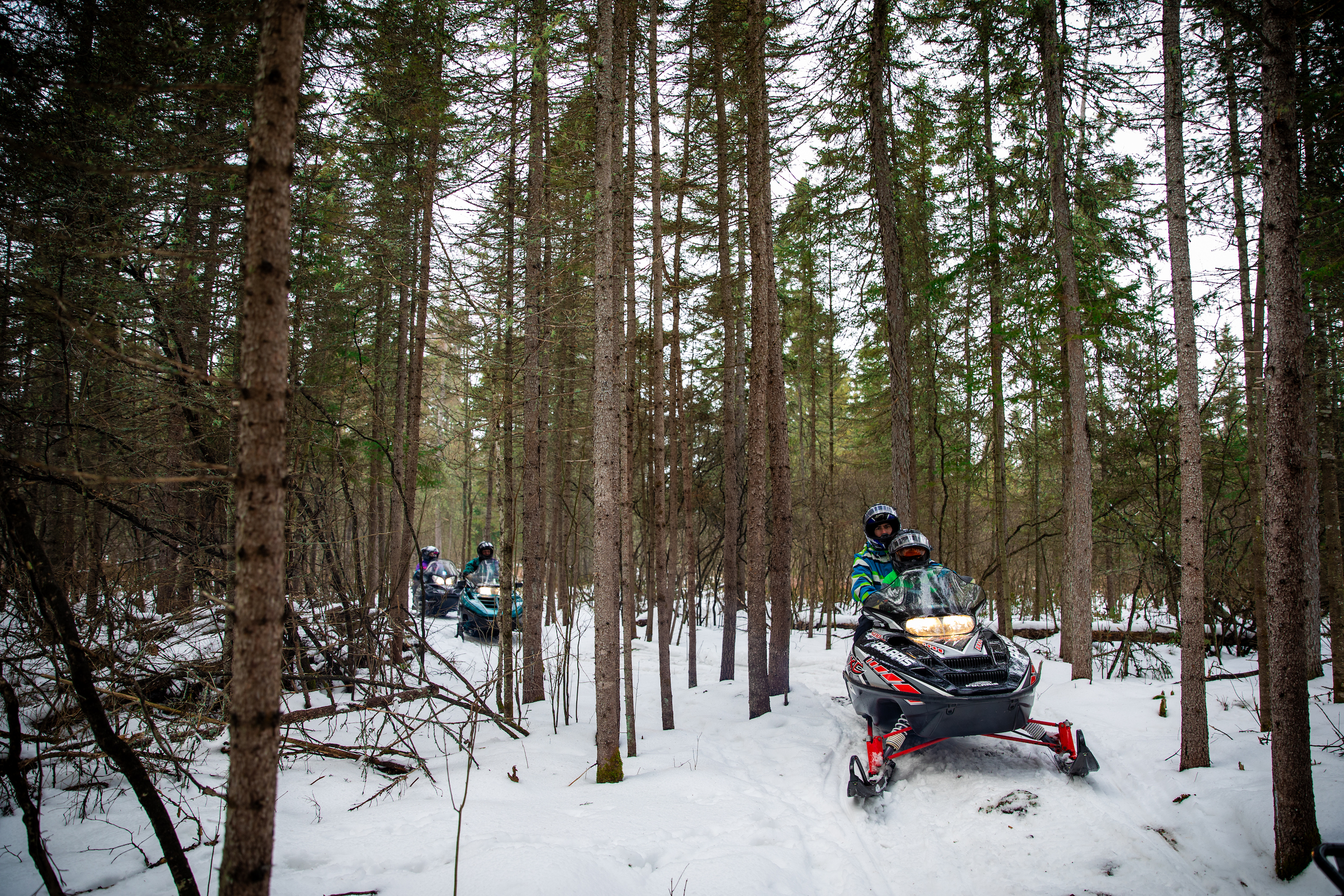
“Especially now, it’s unpredictable,” Jacob Ostaman, land and resources manager for Kitchenuhmaykoosib Inninuwug First Nation, said. “Some people don’t know if they want to go across the river that they used to … A lot of things are happening because of the warm weather and that haunts the usual trapping, hunting and all that. There’s this great concern about warm weather that we’ve been getting lately.”
That’s worrying in remote destinations where the machines are essential transportation in winter. Kitchenuhmaykoosib Inninuwug is in the James Bay lowlands, in Ontario’s Far North. In 2022, the nation used snowmobiles in a critical community health mission, when about two dozen people took a seven-hour trip to get supplies to Bearskin Lake First Nation, a remote fly-in community without road access, during a COVID-19 outbreak.
“There was always a mode of transportation that had been used since as far as we can remember. At that time we used dogsleds to help one another,” Ostaman said. “There was always something happening, and people would use their own dogsled to help the communities they were in.” Nowadays, he said, they have snowmobiles.
Snowmobiles are everyday vehicles in northern winters, a common sight in school parking lots in smaller communities. They are also a big recreational business with passionate fans. Snowmobiling has an estimated $8-billion annual impact on the Canadian economy, mostly in rural communities. Across the country, there are more than 120,000 kilometres of snowmobile trails — more than four times the length of the Trans Canada Trail. About a quarter of these trails criss-cross Ontario. A recent report from the Ontario Federation of Snowmobile Clubs found snowmobilers using its trails last year spent more than $1.4 million, and concluded snowmobiling is a “key pillar of the winter tourism economy.”
But the sport also has serious critics of its impact on the environment and public safety. The effects of noise and air pollution on wildlife and habitat have been key issues in the debate over motorized vehicle use in the backcountry and studies have long shown that off-road vehicles can force threatened species to migrate away from well-suited habitats. It’s also becoming less safe for snowmobilers themselves, as climate change pushes snowfall and ice later into the season, and thaws them earlier: on Feb. 11, a 46-year-old snowmobiler died after going through the ice on Go Home River in the Township of Georgian Bay, Ont.
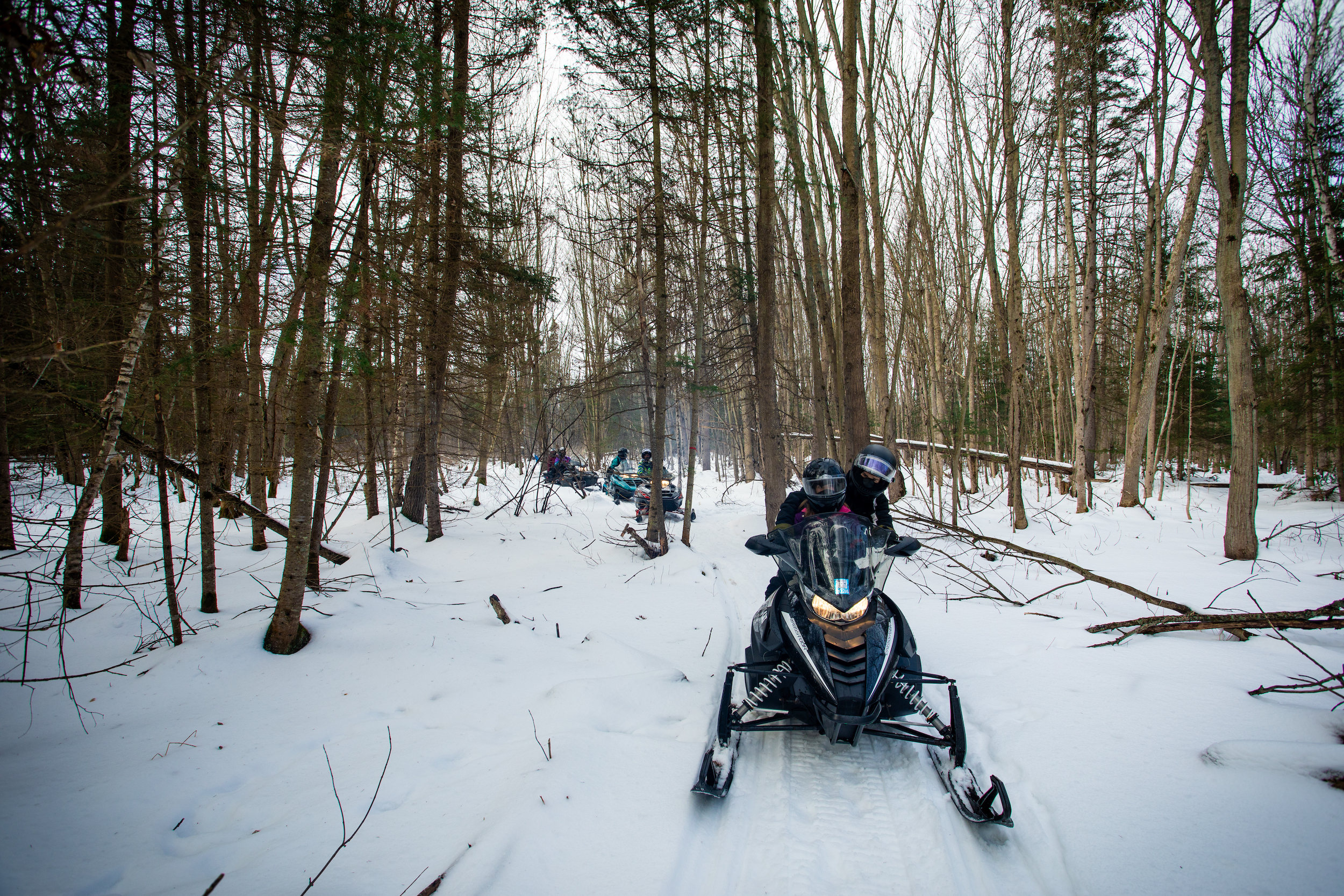
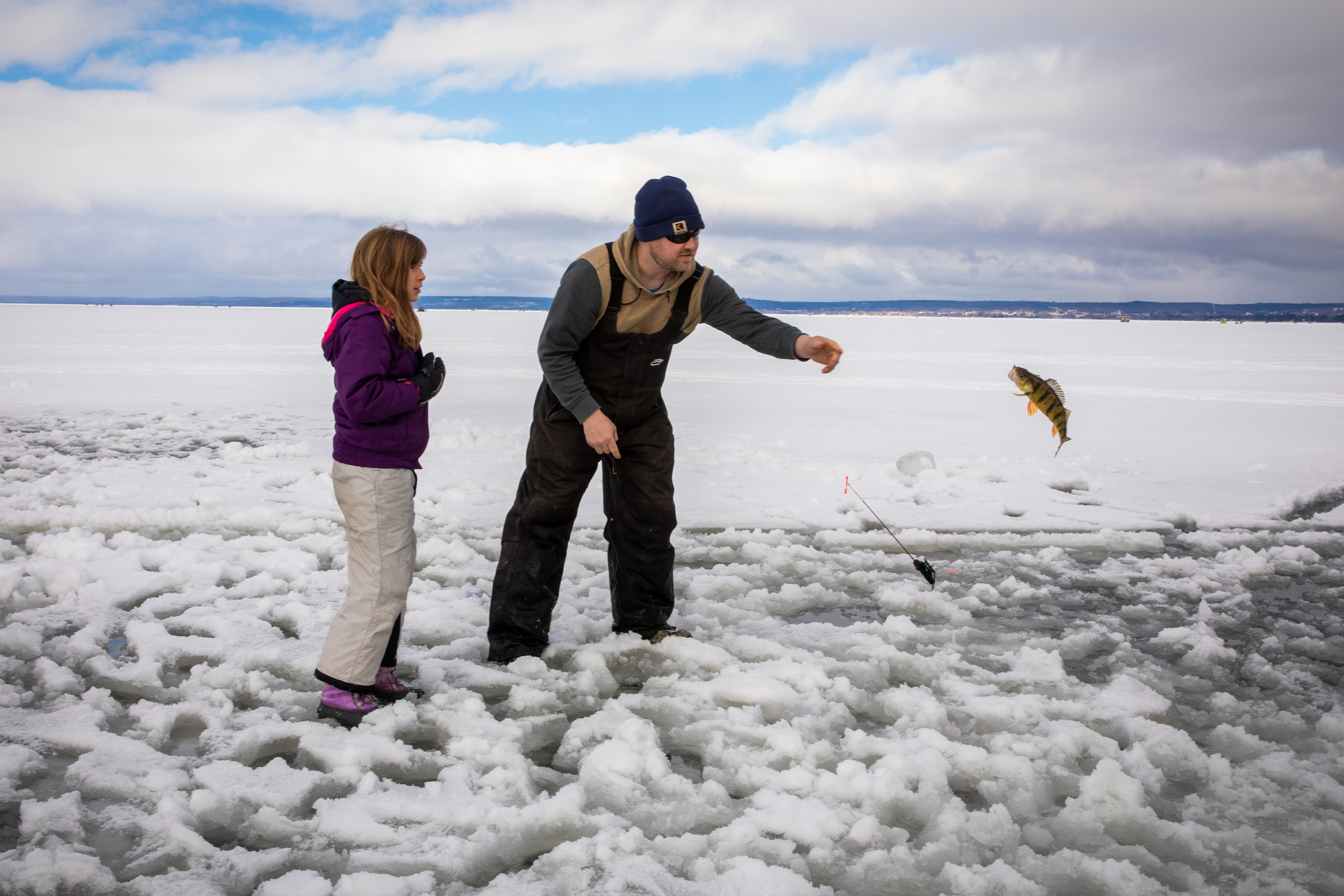
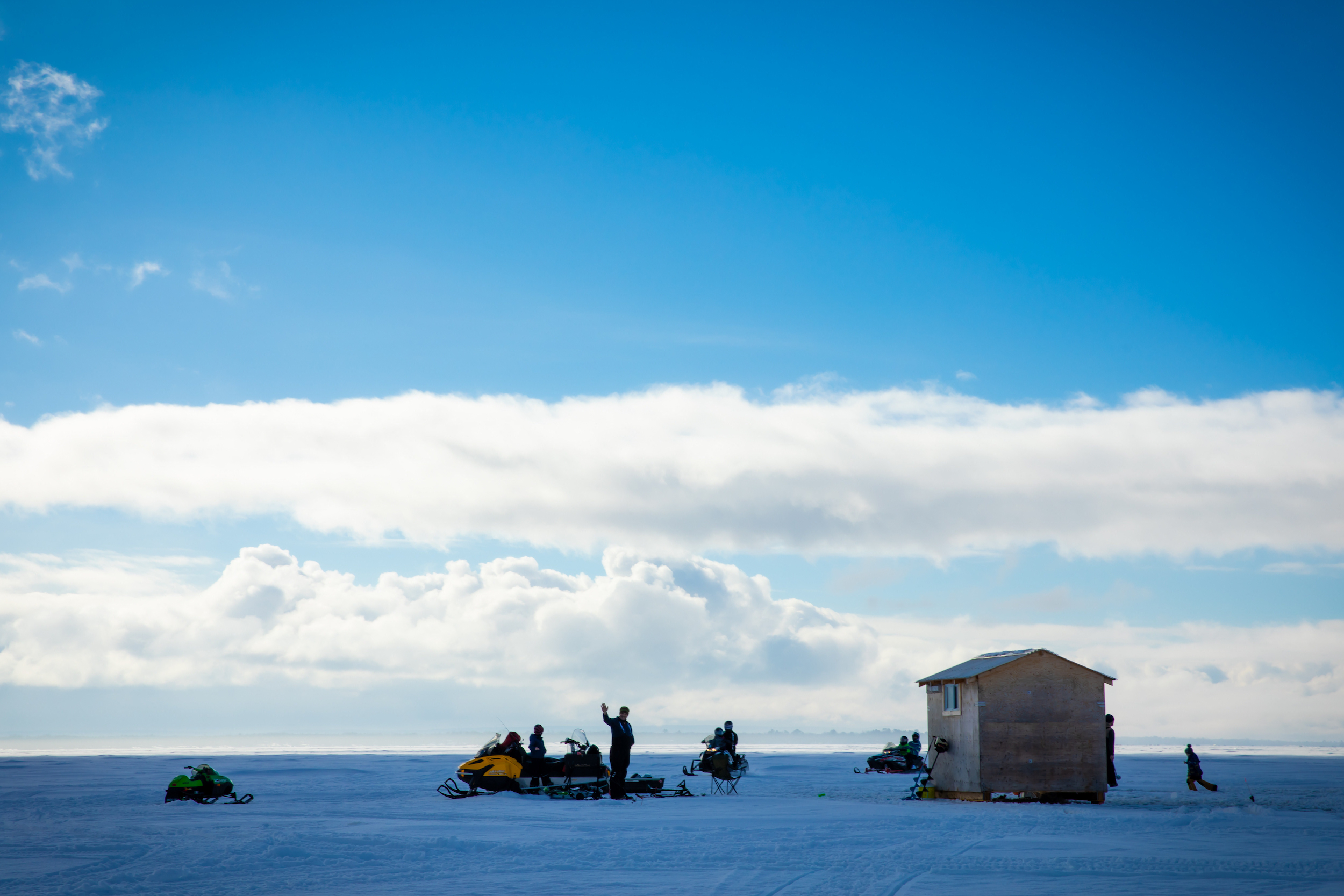
“It’s a family sport; it’s something that you can [use to] take your kids fishing,” Dennis Burns, executive director of the Canadian Council of Snowmobile Organizations, told The Narwhal. The council is the umbrella organization that the Ontario federation and 11 other regional groups belong to, and collects millions in annual fees from snowmobile permit holders to keep trails in good condition. Burns lives in Thunder Bay, Ont., and has been snowmobiling the region’s lakes and trails for decades. “You can explore places in the wintertime. It’ll take you to a point in paradise that you can’t see any other way unless you have a lot of money or you’re very remote.”
Ontario allows snowmobiling on private property with the owner’s permission, on private trails belonging to organizations like the Ontario Federation of Snowmobile Clubs or between the shoulder and fenceline along public roads. While recreational riders must purchase a trail permit to use federation trails, advocacy by the Ontario Federation of Anglers and Hunters won exemptions for those using Crown and public land to snowmobile directly to and from fishing, hunting or trapping grounds.
Volunteers manage almost all of the federation’s trails, and also go door-to-door asking property owners for permission to connect the snowmobiling trails surrounding their land. If the answer is no, the trail must be diverted. In the most northern parts of Ontario, these trails don’t exist.
“It takes population to have organized snowmobile trails,” Burns said.
Saying yes or no to a trail is complicated. Trails keep disturbance to specific areas, while snowmobiling off marked trails can cause stress to wildlife, including hibernating animals, and damage their habitat. Vegetation can be damaged by compaction, which is worse when the snow isn’t deep. Remote nations like Ostaman’s don’t necessarily have the resources for dedicated trail maintenance, but do stick to regular routes to minimize impacts on the land.
Burns maintains that snowmobiling has no negative impact on animals, land or noise pollution. “There are no studies to prove snowmobiles affect the environment,” he wrote in an email to The Narwhal, adding that problems with excessive noise levels and air pollution do occur when irresponsible snowmobilers modify factory exhaust systems. In many provinces including Ontario, this practice is illegal and, Burns said, “grossly misrepresents the sport.”
The Ontario Federation of Snowmobile Clubs says its work is good for the larger community, calling itself stewards of “Ontario’s most valuable recreational trail network.” But shared trails are contentious, and sometimes dangerous: residents have been advocating for changes to the Ottawa Valley Recreation Trail, citing safety concerns caused by speeding snowmobilers. For many years, there has been debate over who gets to use trails in Lanark, Ont., where a rider was killed in a collision between two snowmobiles less than a year ago. “Pedestrians should not have to worry about possible accidents when they are sharing a trail with others on snowmobiles,” Daniel Badre, a personal injury lawyer representing Lanark residents, has written.
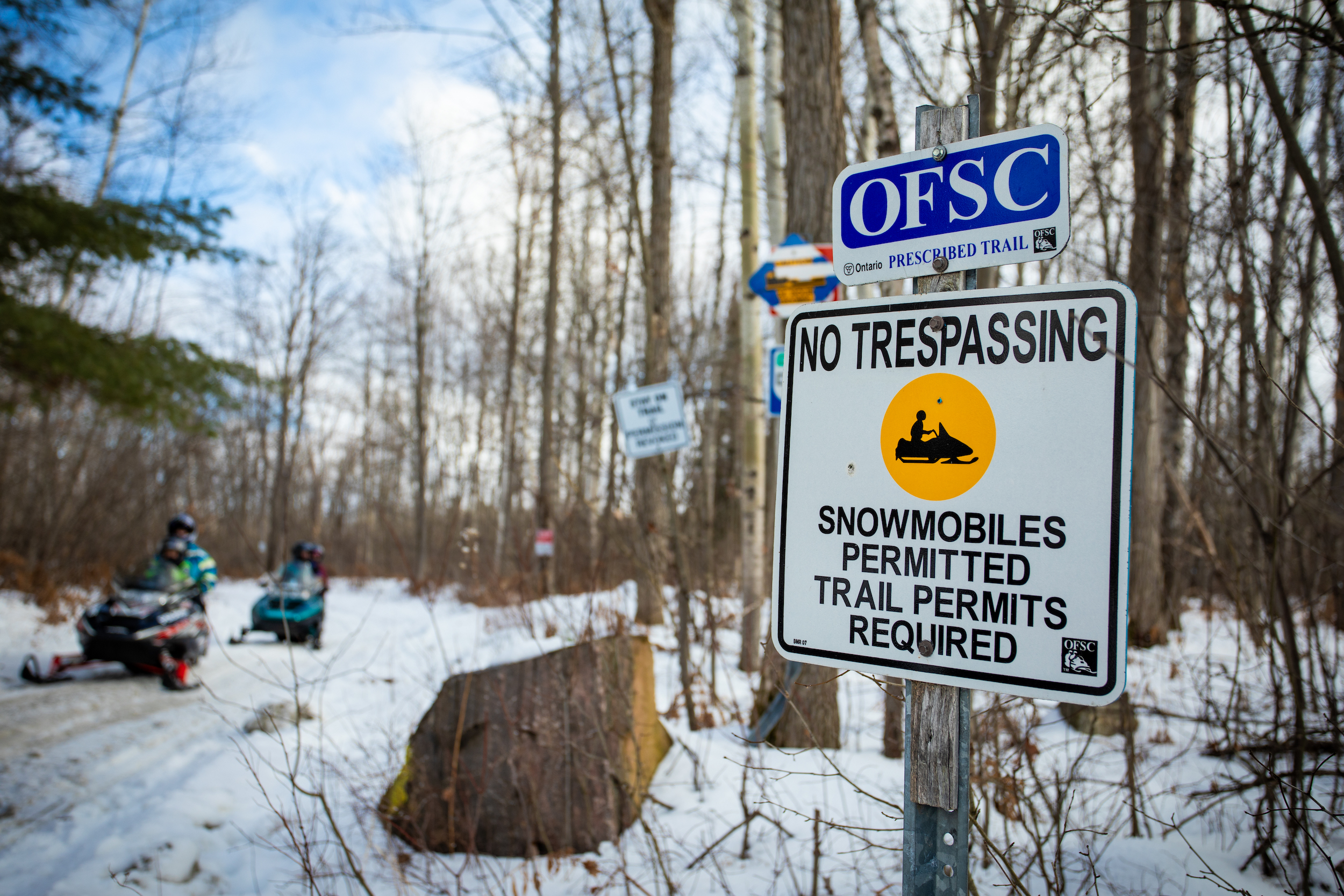
This year, Ontario has already had at least two fatal snowmobile crashes. Driving too fast, particularly during bad weather, is the top cause of accidents. Alcohol and drug use was reported in 49 per cent of snowmobiling fatalities. But climate change is a safety issue, too, with unseasonably warm days thawing ice and shortening the safe season.
Drowning data from the Lifesaving Society showed 62 per cent of snowmobile accidents between 2010 and 2019 involved water and ice holes. Last month, a snowmobile went through the ice into Elliot Lake between Sault Ste. Marie and Sudbury, leading police to urge people to stay off the lake during the warm spell. Two snowmobiles went through the ice on Six Mile Lake days later, prompting a similar warning.
“It’s not a highway. It’s backcountry access, so it still comes with safety concerns and all the things associated with it … you have to be smart to be outdoors,” Burns said. “You just can’t go to the bush at 20-below and not be prepared.” Regular snowmobilers mitigate these risks by going out in pairs and wearing gear such as “floater” jackets to keep their heads above water if they go through the ice.
“It’s very common to get a mild day or two during the course of our winter. It’s not common to get maybe seven or eight days,” Burns said, adding that this year’s high temperatures are due in part to the El Niño weather system. “Many of us are going to save our holidays for April, and [we’re hoping] that we’ll have the best snowmobiling in April ever.”
Despite the optimism, lack of ice and snow is threatening the winter tourism industry in the north: results from a survey conducted by the federation found almost 47 per cent of respondents had ridden snowmobiles less in the last year than past seasons due to poor weather conditions in many areas of the province. This week, the federation’s interactive trail guide showed that only 813 kilometres of its approximately 30,000 kilometres of trails in the province were open.
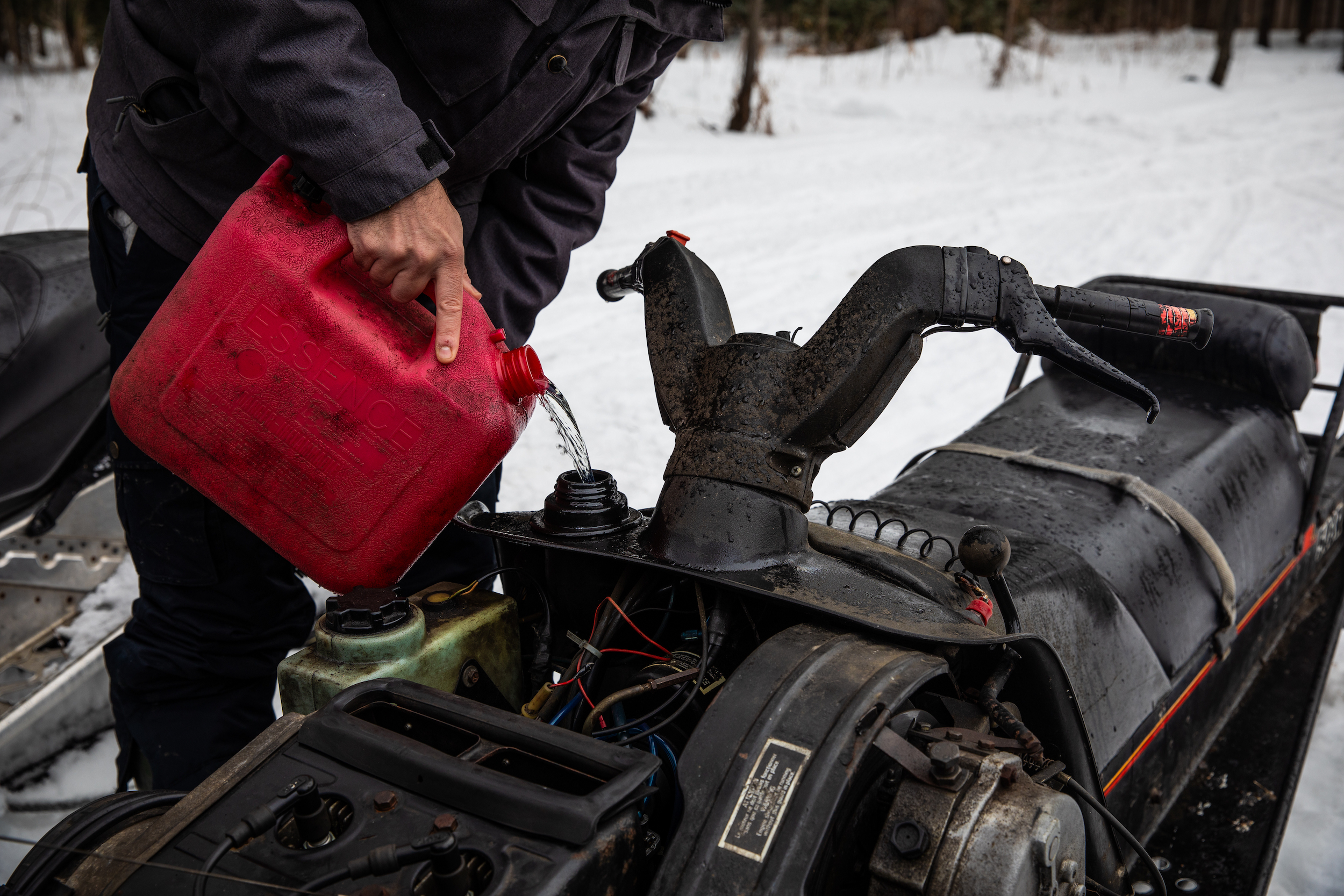
Yet even as Ontario’s trails stay closed long past their usual time, Canadian snowmobile organizations are asking governments to make commitments to the industry. In the last year, the Canadian Council of Snowmobile Organizations lobbied more than 30 government organizations including Health Canada, Fisheries and Oceans, Canada Revenue Agency and the Prime Minister’s Office. Its Ontario branch has been lobbying the House of Commons and Infrastructure Canada, among others. Burns said these conversations have not been about enacting policy change, but ensuring ongoing support, including funding.
He said the snowmobiling community is doing its bit to reduce its own carbon footprint: in the past few decades, many riders have switched to machines with engines that are quieter, more efficient and release fewer fumes. Other regions have seen success from this: Yellowstone National Park in Wyoming managed to settle conflicts over tens of thousands of recreational snowmobilers by instituting rules around cleaner, less noisy engines.
The charge capacity of electric snowmobiles is also growing every year and Burns is in full support of a switchover. “The market is changing, so a lot of people say, ‘Oh, you guys must hate electric snowmobiles,’ and our story is always the same: not at all,” he said. “I [just] need a snowmobile that’ll take me in the bush and let me do what I want.”
Updated on Feb. 14, 2024, at 9:08 a.m. ET: This story was updated to include mention of the death of a snowmobiler who went through ice near Georgian Bay on Feb. 11, 2024.
Get the inside scoop on The Narwhal’s environment and climate reporting by signing up for our free newsletter. On a warm September evening nearly 15...
Continue reading
115 billion litres, 70 years to fix, $5.5 billion in lawsuits

Climate change, geopolitics and business opportunities power a blue economy

10 billion litres of sewage are dumped into Winnipeg’s lakes and rivers each year. Some...
